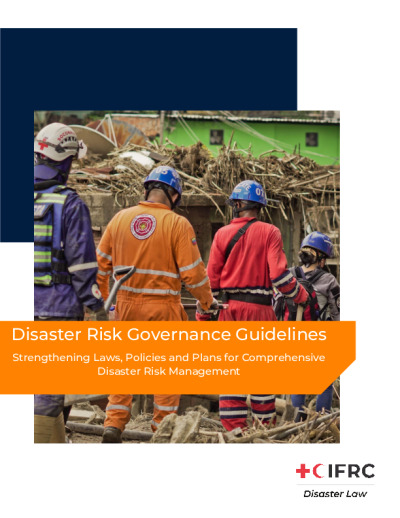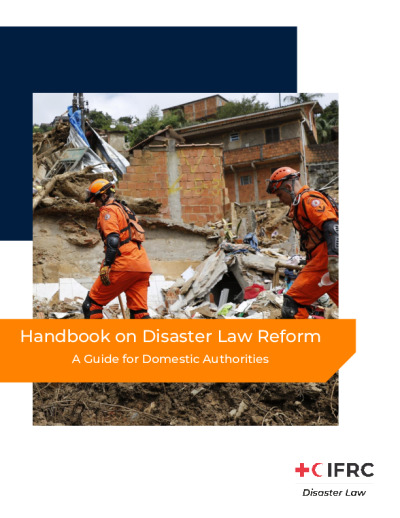Disaster risk management (DRM) is a broad term which refers to all aspects of managing disasters and disaster risk. It includes prevention and mitigation, preparedness, anticipatory action, response and recovery. Often, these components of DRM are referred to as 'phases'. In reality, however, they do not occur in a neat, sequential order. Each component of DRM is vital and needs to be supported by strong disaster risk governance, meaning an enabling framework of laws, policies, plans and institutional arrangements.
During the past two decades, IFRC Disaster Law has researched and developed recommendations on how domestic instruments can best support the different components of DRM. It has conducted major research projects on prevention and mitigation, preparedness and response, recovery, international assistance and public health emergencies. Equally, it has investigated many cross-cutting issues such as integration between DRM and climate change adaptation, child protection in disasters, gender equality and protection against sexual and gender-based violence in disasters, and disaster displacement. Three of IFRC's disaster law guidance documents have been endorsed by resolutions of the International Conference of the Red Cross and Red Crescent, which convenes the components of the International Red Cross and Red Crescent Movement and nearly every government.
In 2023, IFRC Disaster Law consolidated its 20 years of research and recommendations into a single, comprehensive document: the Disaster Risk Governance Guidelines. The Guidelines adopt a holistic approach, identifying how different types of instruments — laws, regulations, policies, plans and Standard Operating Procedures (SOPs) — can collectively provide a strong framework for effective DRM. They address all key topics that need to be addressed in domestic disaster instruments, from reducing risk through strong building codes to declaring a state of emergency to being ready for recovery.
The Guidelines are designed to assist law and policy makers by serving as a benchmark for assessing domestic instruments and identifying strengths, weaknesses and gaps. They can also be used to support the domestic implementation of relevant international instruments, most notably the Sendai Framework and its priority of strengthening disaster risk governance. The release of the Guidelines is timely, with the recent Mid-Term Review of the Sendai Framework finding that progress towards strengthening disaster risk governance has been varied and that there is a continued need to enhance legal frameworks.
IFRC Disaster Law Handbook on Disaster Law Reform - A Guide for Domestic Authorities provides guidance on how to run an effective and inclusive legal review process. It has been designed for government decision-makers and parliamentarians who are planning or engaging in a review of existing disaster laws and regulations. It can also be useful for stakeholders who are participating in or supporting disaster law reform processes.

